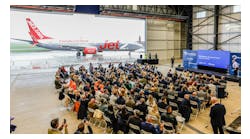Will Narrow-body Long Haul Travel Change the MROs?
When the airline industry was deregulated in 1978, airlines in the USA adopted a new route management model – hub-and-spoke. The paradigm heavily relied on small, commuter aircraft bringing traffic from smaller airports to the central hub of the airline, which would later board all passengers onto high-capacity aircraft and connect large city pairs.
However, following innovations and shifts in the industry, the hub-and-spoke model becomes less and less popular, with smaller, long-range aircraft paving the way for aviation. Hanna Lavinskaja, the Head of Business Development at Enginestands.com, an engine stand leasing company, says that the shift is logical and has the potential to change the way MROs operate in the future.
Rise of point-to-point route management model
To exactly understand the effect of the shift in airline operations’ models, it is vital to explore what is point-to-point and why did it rise to prominence in recent years.
The point-to-point model, unlike the hub-and-spoke one, connects two smaller city pairs instead of routing passengers through a major hub. “The biggest factor contributing to the transformation in the sector in the recent years would be the added comfort of no connections and the release of several new aircraft models. I would mainly talk about Boeing 737MAX, Airbus A220 and the Airbus A321LR and XLR models. These aircraft despite, their modest size, boast an incredible range for their size, which differentiates them from aeroplanes preferred in a hub-and-spoke model,” says Hanna Lavinskaja.
Additionally, in some cases when travelling to a hub, passengers are forced to fly away from their destination to board the flight they need. This, in turn, creates an inefficiency that further incentivises the traveller to search for other, more efficient and less time-consuming modes of transport.
Point-to-point’s effect on MROs
“It is already evident that in the next few years, the view we see in aircraft hangars will change. If now an MRO has 2 or 3 bays dedicated to wide-body aircraft and only one to narrow-bodies, I would not be surprised to see only 1 wide-body bay left with 3-4 new ones dedicated to smaller aircraft. The A321neo, for example, has more than 3,600 orders which is a massive number of aeroplanes we are talking about. For comparison, only 913 Airbus A350s and 1492 Boeing 787s have been ordered. It may look like a lot, but remember we are only talking about A321neo, add all A220s, Boeing 737MAXs, A320s and you will have an immense number of new narrow-bodies entering the service when compared to wide-bodies,” notes the Head of Business Development at Enginestands.com.
Hanna also mentions that the future trends can already be seen in the equipment market for MROs. For instance, more and more engine stands’ manufacturers have already begun altering their production lines to build more stands for next-generation engines powering long-haul narrow-bodies. With that it is evident that the growing number of narrow-bodies entering the market will make MROs prioritise smaller, more capable and versatile aircraft as the growth of the segment will not be rivalled until electric- or hydrogen-powered aircraft will enter the market.



